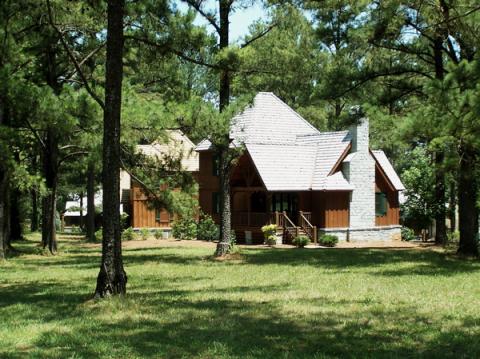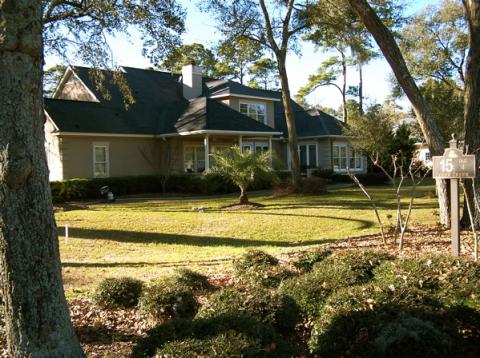
The Golf Cottages at Cuscowilla are available for nightly rentals or longer.
It took a little longer than elsewhere, but prices in prime southern golf communities are sliding. The excellent but contrasting Georgia golf communities of Cuscowilla and The Landings are good indicators of the current situation.
Cuscowilla, a little more than an hour from Atlanta, is located on Lake
The Landings, just 20 minutes from downtown Savannah, features six golf courses by Tom Fazio, Arnold Palmer and Arthur Hills and a predominance of single-family homes on its 4,500 acres. The golf clubs are private.
Despite their differences, Cuscowilla and The Landings have seen prices of homes drop an average 10% to 15% over the last year, largely a consequence of an expanded supply of homes currently on the market.
"You don't see $500,000 homes selling for $325,000 [in The Landings]," says on-site agent Mike Burch, "but it is definitely a buyer's market."
At Cuscowilla, agent Jimmy Brannan says, "prices are down just a little, about 10%, but our owners aren't bailing out yet."
Owners who are having trouble selling their homes or who simply are
The single-family furnished homes in The Landings are currently renting for between $2,000 and $3,500, with utilities included. Prices for unfurnished homes run about 20% less (utilities not included).
Cuscowilla rents out its Lake Villas, Lodge Villas and Golf Cottages, according to Brannan, at prices that range from $100 to $725 per night, depending on location and number of rooms. He says more and more of the second homeowners of these units are putting their homes on a long-term rental list.
The two communities handle golf privileges for renters a little differently. At Cuscowilla, renters pay the customary $110 in green fees, but real estate prospects receive discounts on their room in the Golf Cottages and on green fees ($85). It takes only once around the classic golf course at Cuscowilla to convince any serious linkster of its high quality. Although the community offers some choice single-family homes with views of the lake, and high six- and seven-figure prices to match, most will view Cuscowilla as a perfect place for a vacation home not too far from or too close to the city of Atlanta.
Golfers who choose to rent at The Landings, where homes for sale begin in the $300s, should make sure that the owner of the home they rent has a golf club membership. If so, the renter picks up the owner's dues payments for the duration of the rental and becomes a temporary member of the club, enjoying all privileges including free play on the community's six golf courses. If the renters are not staying in a member's home, then they do not have access to the clubs unless they are seriously considering a purchase of real estate in the community and are working with Mike Burch or one of the other agents from the on-site Landings real estate office. In that case, the renter has access to the clubs and golf courses for 30 days but must pay nominal green fees. After 30 days, the privileges terminate, regardless of whether the renter is still serious about purchasing property at The Landings.
I have been to The Landings, and can testify that for those who want to belong to a good-sized community with people from all over the U.S. (and the world) and a wide variety of well-conditioned golf courses just 20 minutes from a world class city, it should not take more than a week, let alone 30 days, to decide if it is the place for you.
If you would like an introduction to Mike Burch or Jimmy Brannan in these two fine communities, please contact me.

If a club member rents his home at The Landings, the renter obtains golf course and clubhouse privileges for the duration of the rental (with the payment of dues).
























